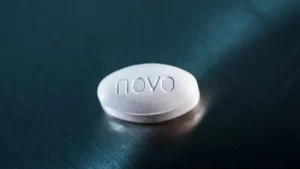Can Glaucoma Be Cured? Symptoms, Diagnosis, and Treatment Options
HOME | DIABETES EDUCATION | CAN GLAUCOMA BE CURED? SYMPTOMS, DIAGNOSIS, AND TREATMENT
Glaucoma, a complex condition, has seen promising advancements in its treatment. Recent developments in ophthalmology offer potential cures and innovative strategies for managing this sight-threatening condition.
Key Takeaways: Can Glaucoma Be Cured?
- Glaucoma cannot be cured, but early detection and treatment can help prevent vision loss and improve prognosis.
- Lowering intraocular pressure is a primary focus in glaucoma treatment.
- Ongoing research in genetic testing, neuroprotection treatments, and innovative drugs and surgical techniques offer hope for improved management and potential cures.
- Regular eye check-ups and discussions with a doctor about glaucoma risk factors are crucial for preventive strategies and early intervention.
Understanding Different Types of Glaucoma; Congenital Glaucoma, Etc
Congenital glaucoma, also known as childhood glaucoma or infantile glaucoma, primarily affects babies and small children under the age of 3. It can lead to permanent vision loss if not promptly addressed. There are two types: Primary Congenital Glaucoma and Secondary Congenital Glaucoma. Diagnosis involves a thorough eye exam under anesthesia to measure intraocular pressure and examine all parts of the eye. Treatment typically involves immediate surgery, oral medications, or eye drops to reduce eye pressure. Early treatment is crucial in preventing complete vision loss, making it essential to seek medical attention promptly. Understanding and addressing congenital glaucoma is critical in preserving the child’s visual field and preventing optic nerve damage due to high eye pressure.
Main Causes of Glaucoma
Main Causes of Glaucoma
The main causes of glaucoma include increased resistance in the eye’s drainage canals, leading to fluid buildup and elevated eye pressure. This elevated pressure can damage the optic nerve, resulting in vision loss. Routine eye exams are crucial for early detection, as glaucoma may not present early warning symptoms. Risk factors for glaucoma include age, ethnicity, diabetes, family history, and certain eye conditions. Treatment options to reduce eye pressure and manage the disease include medications such as pressure-lowering eye drops, laser procedures, and surgical interventions. Seek prompt medical attention from an eye care specialist to prevent permanent vision loss or blindness. Regular monitoring and appropriate treatment can help in managing and living with glaucoma.
Risks for Glaucoma
Risks for Glaucoma
When it comes to the risks for glaucoma, it’s crucial to understand the factors that can contribute to the development and progression of this serious eye condition. Several key risk factors play a significant role in the likelihood of developing glaucoma. Understanding these risks can help you take proactive steps to prevent vision loss. Consult with your eye doctor to assess your individual risk and discuss appropriate treatments. Here’s a summary of the main risks associated with glaucoma:
| Risk Factors | Description |
|---|---|
| Family History | Having a family history of glaucoma increases the risk of developing the condition. |
| Eye Diseases | Pre-existing eye conditions can elevate the risk of developing glaucoma. |
| Age | Advanced age is a significant risk factor for glaucoma. |
| Increased Eye Pressure | Elevated intraocular pressure is a primary risk factor for glaucoma. |
Understanding these risks and being proactive in seeking regular eye exams and appropriate treatments can help lower eye pressure and prevent vision loss associated with glaucoma.
Early Detection of Glaucoma; Cure for Glaucoma
Glaucoma detection is crucial for preventing vision loss and improving prognosis. Your eye doctor uses methods like measuring intraocular pressure (IOP), visual field tests, and optical coherence tomography (OCT) to diagnose glaucoma. Early detection is vital as the disease is often symptomless until advanced stages. Treatment options aim to lower eye pressure and prevent worsening. These options include pressure-lowering eye drops, laser treatments, and in severe cases, invasive glaucoma surgery (MIGS). It’s important to be aware of possible side effects and different types of glaucoma to make informed treatment decisions.
Diagnosing Glaucoma; Symptoms of Glaucoma
Understanding the symptoms of glaucoma is crucial for timely diagnosis and treatment. Glaucoma may not have noticeable symptoms in the early stages, making regular eye check-ups essential. Vision loss often starts with peripheral vision loss, which can go unnoticed initially. As the disease progresses, the effects on side vision become more apparent. Glaucoma can lead to blindness if left untreated. If you notice changes in your vision, particularly the loss of peripheral vision, it is important to consult an eye care professional promptly. Glaucoma symptoms are often subtle, but early diagnosis and intervention can prevent further damage. Discuss any concerns about eye pressure and symptoms with your doctor for proper diagnosis and treatment.
Glaucoma Treatment Options: Laser Treatment
Glaucoma Treatment Options: Laser Treatment
Laser treatment for glaucoma may be recommended if eyedrops are ineffective in lowering eye pressure. This treatment option aims to improve the drainage pathways in the eye to decrease the amount of fluid and lower eye pressure. Two main types of laser surgery are commonly used to treat glaucoma:
Laser Trabeculoplasty: This procedure opens up the drainage tubes in the eye to reduce pressure. It is used when eyedrops have not effectively lowered eye pressure.
Cyclodiode Laser Treatment: This treatment destroys eye tissue to decrease fluid production. It is utilized to treat glaucoma by targeting the ciliary body to decrease the production of intraocular fluid.
Laser treatment plays a crucial role in eye care and is an important option to consider in the comprehensive management of glaucoma.
Medications for Treating Glaucoma
When treating glaucoma, finding the right medications is crucial for effectively lowering eye pressure and preserving vision. There are different types of glaucoma eye drops available, each with a unique mechanism for reducing eye pressure. These medications promote fluid drainage from the eye, lowering pressure and preventing vision deterioration. It is important to use these eye drops consistently as prescribed by your doctor, as non-compliance can lead to vision loss. Potential side effects may include stinging, itching, blurry vision, and changes in eye color. Regular follow-up appointments with your doctor are necessary to assess treatment effectiveness. Prior to starting any glaucoma medicines, inform your doctor about other medications, supplements, or vitamins to avoid potential interactions.
| Type of Glaucoma Eye Drops | Mechanism | Potential Side Effects |
|---|---|---|
| Prostaglandins | Aid in fluid drainage, reducing eye pressure | Stinging, itching, blurry vision |
| Rho kinase inhibitors | Facilitate fluid drainage, lowering eye pressure | Blurry vision, changes in eye color |
| Nitric oxides | Promote fluid drainage, lowering eye pressure | Redness, headaches |
| Miotic or cholinergic agents | Aid in fluid drainage, reducing eye pressure | Dry mouth, changes in eye color |
| Alpha-adrenergic agonists | Reduce the production of eye fluid, lowering eye pressure | Redness, itching, stinging |
These medications are crucial for managing glaucoma and preventing further vision loss.
Surgical Procedures for Glaucoma
Surgery is the best option for glaucoma when other treatments fail to reduce eye pressure and preserve vision. The type of glaucoma, disease progression, and the condition of the eyes’ drainage canals are important factors to consider when choosing a surgical procedure. Traditional incisional surgery and minimally invasive glaucoma surgery (MIGS) are the two options available. MIGS procedures, which use tiny stents or implants to improve the eye’s natural drainage system, are gaining popularity due to their lower risk and faster recovery times. It is crucial to consult with an ophthalmologist to determine the most appropriate surgical approach for your specific condition. Regular follow-ups and field tests are necessary after surgery to monitor the effectiveness of the glaucoma treatment.
Lifestyle Changes for Glaucoma
Lifestyle Changes for Glaucoma
Regular exercise, specifically aerobic activities, can help lower intraocular pressure. Avoid head-down yoga positions as they can increase eye pressure. A healthy diet rich in antioxidants and omega-3 fatty acids is beneficial. Limit caffeine intake to prevent elevated eye pressure. Ginkgo biloba extract may have neuroprotective and blood flow effects. Avoid sleeping face-down and elevate the head of the bed to prevent increased intraocular pressure. These lifestyle changes, along with prescribed medications, can effectively manage glaucoma.
Coping With Glaucoma
Coping With Glaucoma
To effectively cope with glaucoma, it is crucial to prioritize medication adherence and implement fall prevention strategies to maintain your safety and prevent accidents.
Medication Adherence
Take a variety of eyedrops throughout the day to manage glaucoma.
Maintain a schedule for proper dosage timing.
Set alarms and alerts on devices for reminders.
Inform your doctor about any medication or dosage issues.
Strict adherence to medication is crucial for preserving vision.
Fall Prevention
Glaucoma may increase the risk of falling and accidents.
Mark boundaries in your home with bright or contrasting tape.
Organize commonly used items for easy accessibility.
Use the scanning technique to survey surroundings before walking.
Be cautious of steps and other potential obstacles.
Research on Treatment for Glaucoma
Promising advancements in glaucoma treatment have been discovered, offering hope for improved management and potential cures. The focus has been on lowering intraocular pressure, a key factor in glaucoma progression. New medications and surgical techniques aim to slow or stop the condition from worsening. The National Eye Institute (NEI) has funded studies to understand glaucoma causes and develop effective treatments. Ongoing research includes genetic testing, neuroprotection treatments, and innovative drugs and surgical techniques. These efforts seek changes in the normal eye structure and function, with the goal of improving outcomes for individuals with glaucoma.
In 1988, researchers started the NEI-funded Advanced Glaucoma Intervention Study (AGIS, ). AGIS was a multicenter, randomized clinical trial that evaluated 2 sequences of surgery treatments for glaucoma to find out which sequence better preserved vision. The AGIS recruited 581 patients with advanced glaucoma and randomly assigned them to receive 1 of 2 treatment sequences:
- Argon laser trabeculoplasty (ALT) followed by trabeculectomy, if needed
- Trabeculectomy followed by ALT, if needed
Both groups got a second trabeculectomy if their initial treatment plan didn’t work.
Prevention of Glaucoma
Preventing Glaucoma
To prevent glaucoma, it’s crucial to be aware of the risk factors and take proactive measures. Here are some key points to keep in mind:
- Be mindful of the symptoms and risk factors for glaucoma.
- Regularly discuss your risk for glaucoma with your doctor and seek guidance on preventive measures.
- Explore preventive strategies such as increasing drainage in the eye, laser trabeculoplasty, laser peripheral iridotomy, and innovative drug delivery methods.
Staying informed and taking appropriate preventive actions, in collaboration with your healthcare provider, is crucial in preventing the onset and progression of glaucoma.
Outlook for Glaucoma Patients
Glaucoma prognosis depends on factors such as treatment adherence, disease progression, and potential complications. Glaucoma is a chronic condition requiring ongoing management to prevent vision loss. The main focus is reducing eye pressure to slow disease progression. If left untreated, glaucoma can cause irreversible optic nerve damage, leading to peripheral vision loss and blindness. Surgical interventions, like filtering surgery, may be necessary to improve fluid drainage. Emerging treatments target the rho kinase pathway to enhance drainage in multiple eye surgeries for glaucoma.
| Prognosis Factors | Considerations |
|---|---|
| Treatment Adherence | Regular use of prescribed medications and timely follow-up appointments |
| Disease Progression | Monitoring optic nerve health and visual field changes |
| Potential Complications | Assessing risk of vision loss and impact on daily living |
| Surgical Interventions | Evaluating the need for advanced procedures to manage elevated eye pressure |
Lotemax Ophthalmic Gel are authorized for the treatment of inflammation (swelling, redness, and itching) as well as pain following eye surgery.
Frequently Asked Questions
What Percentage of Glaucoma Patients Go Blind?
Approximately 10% of glaucoma patients may experience visual impairment, while around 5% may go blind due to the condition. Early detection and prompt treatment are crucial.
Can You Stop Glaucoma From Progressing?
You can slow glaucoma progression with prompt treatment. Medications and surgery help lower eye pressure, slowing vision loss. Research aims to develop new treatments. Regular monitoring is important to assess effectiveness and manage potential side effects.
What Is the Best Treatment for Glaucoma?
The best treatment for glaucoma involves medications such as eye drops or oral medicines, laser treatment, or surgery to lower eye pressure. Early detection and regular check-ups are crucial for effectively managing glaucoma.
What Is the Main Cause of Glaucoma?
The main cause of glaucoma is increased intraocular pressure, which leads to optic nerve damage. Prompt treatment can slow vision loss, but there is currently no cure. Treatment includes medications and surgery to lower eye pressure.



